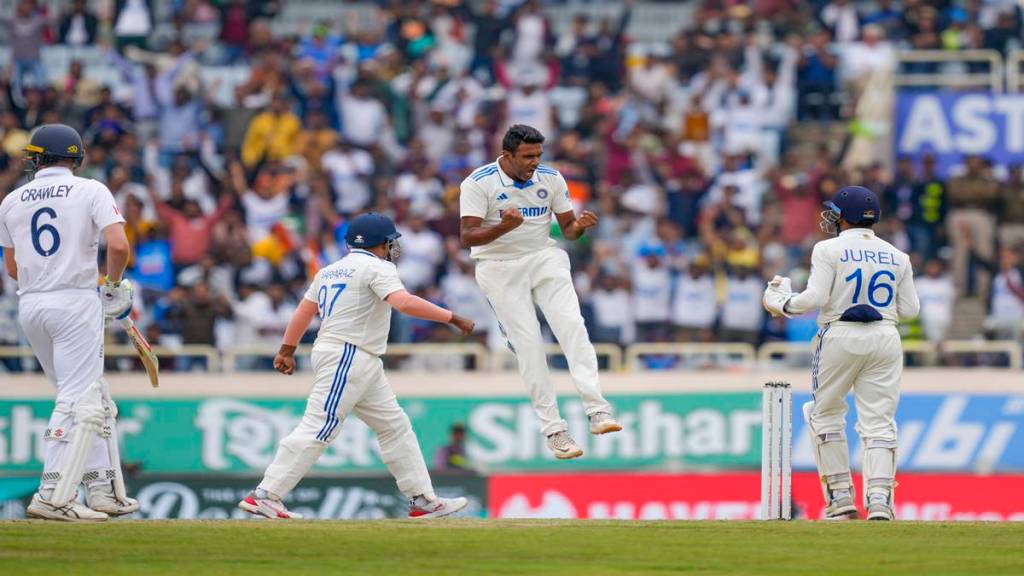By N Chandra Mohan
India clinched an outstanding 3:1 series triumph over England winning by 5 wickets in the fourth test match in Ranchi. To be sure, this win did not come without hiccups on a fast-deteriorating black soil pitch with variable bounce, which severely tested both the fiercely competitive teams. India needed 192 runs for victory which its batsmen managed to chase exemplifying the team’s strengths deep down the order. Shubman Gill along with rookie wicket-keeper batsman, Dhruv Jurel—who missed a century in the first innings—saw the team home. The series is memorable also for showcasing the flamboyant batting skills and scoring intent of a young opening batsman, Yashasvi Jaiswal, who scored two double centuries in the series.
Bazball thus has met its match in the Indian subcontinent. This new playing philosophy espoused by the head coach of the English team, Brendon McCullum, and captain Ben Stokes has set off a revolution in that nation’s cricketing fortunes and has brought a frisson of excitement back to test cricket. Prior to their appointment, England won only one of their previous 17 tests. But under the new leadership—since the start of the summer of 2022, the team won 14 out of the next 19 tests. Bazball stands for an uninhibited style of playing regardless of the outcome where members of the team are encouraged to express themselves with freedom as their place in the side is assured. Look no further than the classical Joe Root reverse sweeping and scooping with abandon.
India’s weapons to counter Bazball have been its strengths with bat and ball, especially its world-class bowlers: Jasprit Bumrah, Ravichandran Ashwin, Ravindra Jadeja, and Kuldeep Yadav. The series-defining image of Bumrah’s dominance was in the second test at Visakhapatnam when his toe-crushing yorker left Ollie Poe sprawling on the crease with the middle and leg stumps splayed across the turf. Captain Stokes was expecting an outswinger but it held its line knocking the off stump. Stokes’ bemused reaction almost said “what do I do with that!” In 2021, Bumrah’s reverse swing at the Oval led Guardian’s cricket writer to rapturise his performance that day when “cricket’s master of disguise took on at least half a dozen guises: talisman, calm head, tail-end intimidator, new-ball craftsman, reverse-swing guru, yorker-summoning necromancer.”
England equally faced challenges with India’s spin attack. Although some of the pitches were rank turners, the decisive edge was the adaptation of bowlers like Ashwin whose tally now exceeds 500 in test cricket. On the most unhelpful pitch at Ranchi, he managed a five-fer. He said his strategy had to change as there was not much turn. Ideally, he likes the ball to drop on the surface and get some bite out of the surface. But as that wasn’t possible, he used side spin and hammered the bowl on the pitch. The all-round skills of Jadeja enabled India’s win in the third test match at his home ground in Rajkot
The series loss against India, however, is unlikely to change the approach of Bazball. It is there to stay amidst indications it has even entered the world of management by aligning profit (winning) and purpose (entertaining) according to Stewart Langdon in the FE. Stokes and his men will be unfazed with this defeat and will seek fresher challenges. At a time when shorter formats of the game are relatively more popular with fans, the fact that crowds throng the stadiums when Bazball is in play is the best advertisement for test cricket, which is the purest form of the game. Cricket has clearly become more exciting with this revolution and it is perhaps not inappropriate to distill some of its tenets to fashion a world-beating Indian cricketing side in the future. While the country now savours the winning feeling, the best lesson perhaps is to have a stable side who are encouraged to play with freedom without concern for the outcome.
N Chandra Mohan, New Delhi-based economics & business commentator
Views are personal


